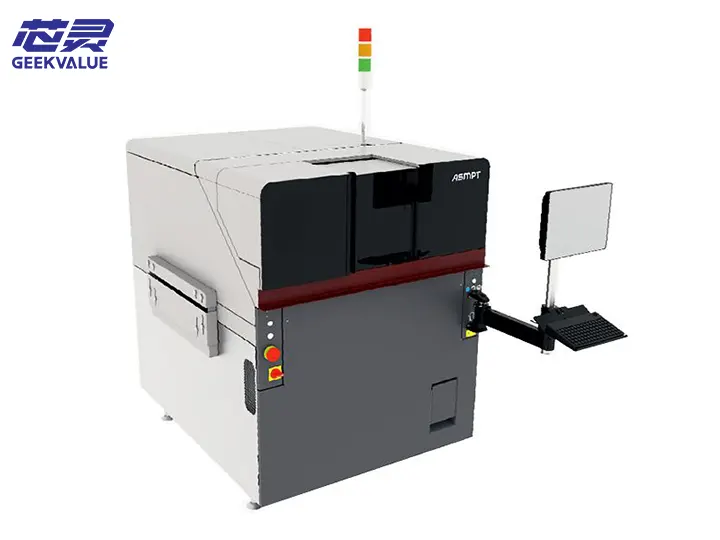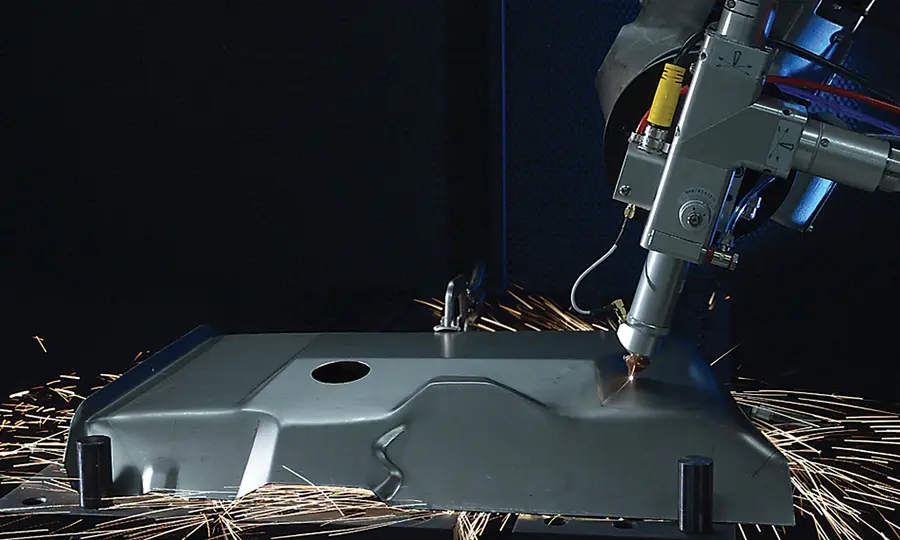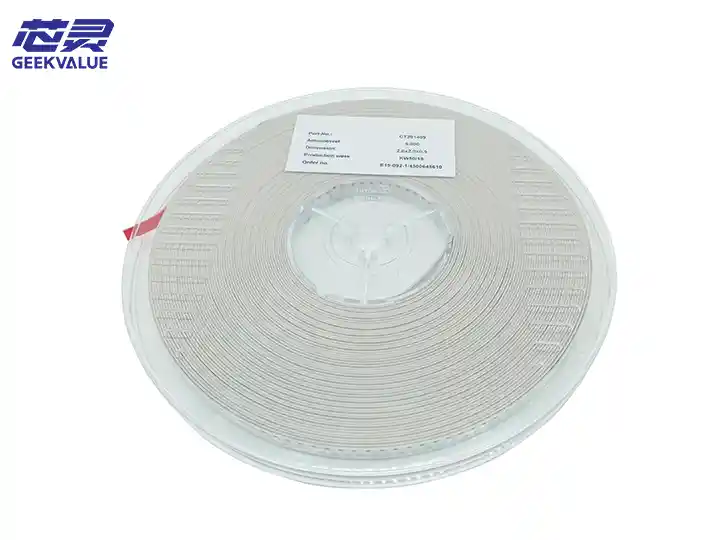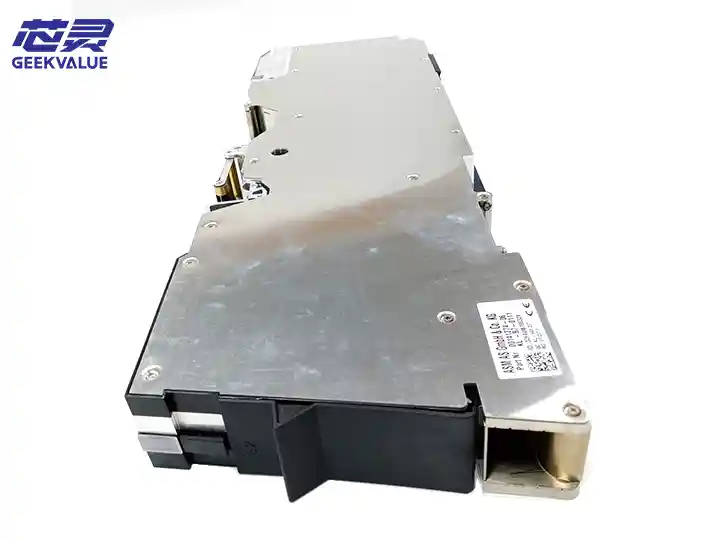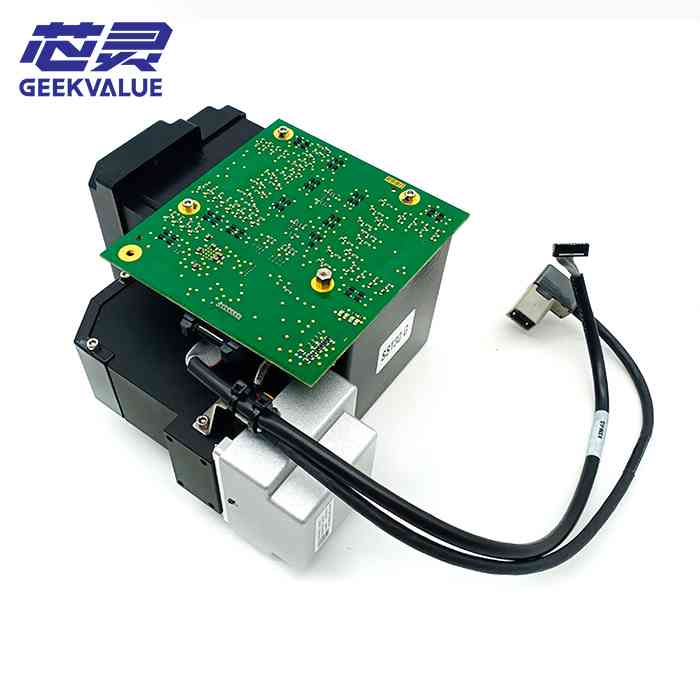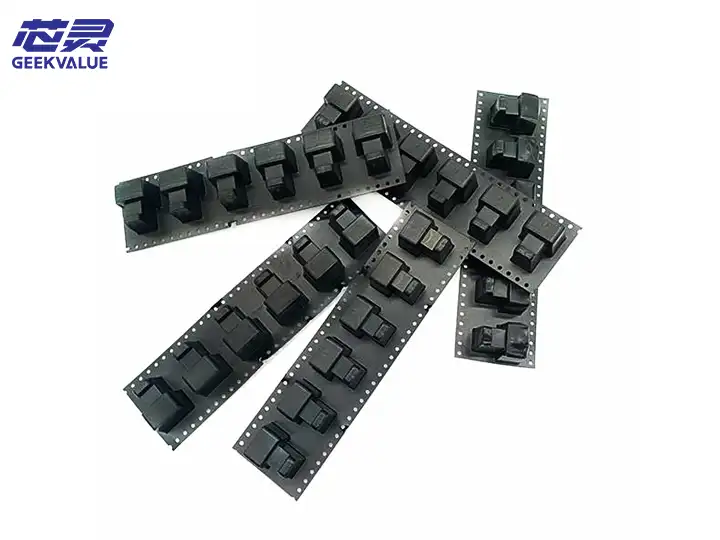Ο DEK TQL είναι ένας πλήρως αυτόματος εκτυπωτής κολλητικής πάστας υψηλής απόδοσης που κυκλοφόρησε από την ASM Assembly Systems (πρώην DEK). Έχει σχεδιαστεί για γραμμές παραγωγής SMT υψηλής ακρίβειας και χωρητικότητας και χρησιμοποιείται ευρέως σε ηλεκτρονικά είδη ευρείας κατανάλωσης, ηλεκτρονικά αυτοκινήτων, εξοπλισμό επικοινωνιών και άλλους τομείς. Είναι ιδιαίτερα κατάλληλος για εκτύπωση με κολλητική πάστα σε πλακέτες τυπωμένων κυκλωμάτων λεπτού βήματος, όπως εξαρτήματα 01005 και BGA βήματος 0,3 mm.
2. Βασικές προδιαγραφές DEK TQL
Προδιαγραφές παραμέτρων
Μέγιστο μέγεθος πλακέτας τυπωμένου κυκλώματος 510 × 460 mm
Ακρίβεια εκτύπωσης ±15μm (Cpk≥1,33)
Ταχύτητα εκτύπωσης 50–300 mm/s (ρυθμιζόμενη)
Εύρος πίεσης ξύστρας 5–20 kg (προγραμματιζόμενη)
Πάχος στήριξης στένσιλ 0,1–0,3 mm
Ταχύτητα αποσυναρμολόγησης 0,1–3 mm/s (ρυθμιζόμενη)
Απαιτήσεις ισχύος 220VAC / 50-60Hz, 1,5kW
Πίεση πηγής αέρα 0,5–0,7 MPa
Σύστημα όρασης CCD υψηλής ανάλυσης (υποστηρίζει 2D/3D SPI)
3. Κύρια χαρακτηριστικά του DEK TQL
1. Εκτύπωση υψηλής ακρίβειας
Ακρίβεια εκτύπωσης ±15μm, υποστηρίζει λεπτά εξαρτήματα όπως 01005, βήμα BGA 0,3mm.
Σύστημα ελέγχου κλειστού βρόχου, ρύθμιση της πίεσης της ξύστρας σε πραγματικό χρόνο για να εξασφαλιστεί ομοιόμορφο πάχος κόλλας συγκόλλησης.
2. Υψηλή ταχύτητα και υψηλή απόδοση
Η μέγιστη ταχύτητα εκτύπωσης είναι 300 mm/s, γεγονός που βελτιώνει την UPH (μοναδιαία ωριαία παραγωγική ικανότητα) της γραμμής παραγωγής.
Γρήγορη αλλαγή γραμμής (<5 λεπτά), υποστηρίζοντας την αυτόματη εναλλαγή προγράμματος.
3. Ευφυής έλεγχος
Ενσωμάτωση 2D/3D SPI (ανίχνευση πάστας συγκόλλησης) για τη μείωση της εκροής ελαττωματικών προϊόντων.
Αυτόματος καθαρισμός χαλύβδινου πλέγματος (στεγνό σκούπισμα/υγρό σκούπισμα/προσρόφηση με ηλεκτρική σκούπα) για τη μείωση των υπολειμμάτων της πάστας συγκόλλησης.
4. Σταθερό και αξιόπιστο
Αρθρωτός σχεδιασμός (ξύστρα, κάμερα, σύστημα καθαρισμού μπορούν να αντικατασταθούν γρήγορα).
Σύνδεση συστήματος MES για την επίτευξη ιχνηλασιμότητας δεδομένων και βελτιστοποίησης διαδικασιών.
IV. Βασικές λειτουργίες DEK TQL
Αυτόματη τοποθέτηση PCB
Οπτική ευθυγράμμιση CCD υψηλής ακρίβειας (αναγνώριση σημείου σήμανσης) για την εξασφάλιση ακριβούς αντιστοίχισης του χαλύβδινου πλέγματος και της πλακέτας τυπωμένου κυκλώματος.
Έξυπνος έλεγχος ξύστρας
Η πίεση, η ταχύτητα και η γωνία είναι προγραμματιζόμενα για να προσαρμόζονται σε διαφορετικές πάστες συγκόλλησης (συμπεριλαμβανομένης της πάστας συγκόλλησης χωρίς μόλυβδο, της κόλλας κ.λπ.).
Διαχείριση τάσης χαλύβδινου πλέγματος
Αυτόματη ανίχνευση τάσης χαλύβδινου πλέγματος για αποφυγή κακής εκτύπωσης λόγω χαλαρού χαλύβδινου πλέγματος.
Ανίχνευση 3D κόλλας συγκόλλησης (προαιρετικά)
Μέτρηση σε πραγματικό χρόνο του πάχους και του όγκου της κόλλας συγκόλλησης για την αποφυγή ελαττωμάτων όπως ανεπαρκής συγκόλληση και άκρες έλξης.
Απομακρυσμένη παρακολούθηση και ανάλυση δεδομένων
Υποστήριξη Βιομηχανίας 4.0, δυνατότητα σύνδεσης με σύστημα MES/ERP και βελτιστοποίηση των παραμέτρων παραγωγής.
V. Ο ρόλος του DEK TQL στη γραμμή παραγωγής SMT
Βελτίωση της απόδοσης
Η εκτύπωση υψηλής ακρίβειας μειώνει την κακή συγκόλληση μετά από έμπλαστρο SMT (όπως η ψυχρή συγκόλληση και η γεφύρωση).
Βελτίωση της αποδοτικότητας
Εκτύπωση υψηλής ταχύτητας + γρήγορη αλλαγή γραμμής, μειώνοντας τον κύκλο παραγωγής.
Μειώστε το κόστος
Μειώστε τα απόβλητα κόλλας συγκόλλησης και τον ρυθμό επανεπεξεργασίας.
Προσαρμοστείτε στην ευέλικτη παραγωγή
Υποστήριξη παραγωγής PCB πολλαπλών ποικιλιών, μικρής παρτίδας (όπως προσαρμοσμένες ανάγκες ηλεκτρονικών αυτοκινήτων).
VI. Προφυλάξεις κατά τη χρήση
1. Εγκατάσταση εξοπλισμού και περιβάλλον
Έλεγχος θερμοκρασίας/υγρασίας: Η συνιστώμενη θερμοκρασία περιβάλλοντος είναι 23±3℃ και η υγρασία είναι 40-60%RH.
Σταθερότητα πηγής αερίου: Βεβαιωθείτε ότι η πίεση του αέρα είναι 0,5–0,7 MPa για να αποφύγετε διακυμάνσεις που επηρεάζουν την ποιότητα εκτύπωσης.
Οριζόντια βαθμονόμηση: Ο εξοπλισμός πρέπει να τοποθετείται σε σταθερό έδαφος και η επιπεδότητά του πρέπει να ελέγχεται τακτικά.
2. Προδιαγραφές λειτουργίας
Διαχείριση κόλλας συγκόλλησης: Αφήστε την να ζεσταθεί για περισσότερο από 4 ώρες και ανακατέψτε για 2-3 λεπτά πριν από τη χρήση.
Καθαρισμός στένσιλ: Εκτελέστε υγρό σκούπισμα + καθαρισμό με προσρόφηση κενού μετά από κάθε 5-10 εκτυπώσεις.
Συντήρηση ξύστρας: Ελέγχετε τακτικά τη φθορά. Η διάρκεια ζωής μιας μεταλλικής ξύστρας είναι περίπου 500.000 φορές.
3. Βελτιστοποίηση προγράμματος
Ταχύτητα αποκαλουπώματος: Συνιστάται 0,3–1 mm/s. Η πολύ γρήγορη ταχύτητα θα προκαλέσει εύκολα αιχμηρό τράβηγμα της πάστας συγκόλλησης.
Γωνία ξύστρας: Συνήθως ρυθμίζεται στις 45–60°. Μια πολύ μικρή γωνία μπορεί να επηρεάσει το αποτέλεσμα επικασσιτέρωσης.
VII. Συνήθη σφάλματα και λύσεις
1. Απόκλιση εκτύπωσης (Αποτυχία αναγνώρισης σημείου σημαδιού)
Πιθανοί λόγοι:
PCB Σημείο ρύπανσης ή ανεπαρκής ανάκλαση.
Ο φακός της κάμερας είναι βρώμικος ή η πηγή φωτός δεν είναι φυσιολογική.
Διάλυμα:
Καθαρισμός πλακέτας τυπωμένου κυκλώματος Σημειώστε το σημείο και ρυθμίστε τη φωτεινότητα της πηγής φωτός.
Βαθμονομήστε το οπτικό σύστημα και ελέγξτε την εστίαση της κάμερας.
2. Ακροδέκτης κόλλας συγκόλλησης/ανεπαρκής κόλλα συγκόλλησης
Πιθανοί λόγοι:
Η ταχύτητα αποσυναρμολόγησης είναι πολύ υψηλή.
Η τάση του χαλύβδινου πλέγματος είναι ανεπαρκής ή η πίεση της ξύστρας είναι ανομοιόμορφη.
Διάλυμα:
Μειώστε την ταχύτητα ξεκαλουπώματος στα 0,3 mm/s.
Ελέγξτε την τάση του χαλύβδινου πλέγματος (συνιστάται ≥35N/cm²) και ρυθμίστε το επίπεδο της ξύστρας.
3. Το χαλύβδινο πλέγμα είναι μπλοκαρισμένο (υπολείμματα κόλλας συγκόλλησης)
Πιθανοί λόγοι:
Η πάστα χάλυβα είναι στεγνή ή η συχνότητα καθαρισμού είναι ανεπαρκής.
Ο σχεδιασμός ανοίγματος από χαλύβδινο πλέγμα είναι παράλογος (όπως λόγος πλάτους προς βάθος <1,5).
Διάλυμα:
Αυξήστε τη συχνότητα του υγρού σκουπίσματος και χρησιμοποιήστε ειδικό καθαριστικό με ατσάλινο πλέγμα.
Βελτιστοποιήστε τον σχεδιασμό ανοίγματος του χαλύβδινου πλέγματος (συνιστώμενη αναλογία πλάτους προς βάθος ≥1,5).
4. Συναγερμός εξοπλισμού (πίεση αέρα/βλάβη σερβοκινητήρα)
Πιθανές αιτίες:
Διαρροή αέρα ή ανεπαρκής πίεση αέρα.
Υπερθέρμανση σερβοκινητήρα ή βλάβη του οδηγού.
Θεραπεία:
Ελέγξτε τον αγωγό πηγής αέρα και αντικαταστήστε τον κατεστραμμένο αγωγό αέρα.
Καθαρίστε τον ανεμιστήρα ψύξης του σερβοκινητήρα και επανεκκινήστε το σύστημα.
5. Μη φυσιολογική πίεση ξύστρας
Πιθανές αιτίες:
Βλάβη αισθητήρα ξύστρας.
Φθορά ή παραμόρφωση της ξύστρας.
Θεραπεία:
Βαθμονομήστε τον αισθητήρα πίεσης.
Αντικαταστήστε την ξύστρα (οι μεταλλικές ξύστρες συνιστώνται να ελέγχονται κάθε 3 μήνες).
VIII. Συστάσεις συντήρησης
Καθημερινή συντήρηση:
Καθαρίστε την επιφάνεια του μηχανήματος, την τροχιά και τα υπολείμματα κόλλας συγκόλλησης στο χαλύβδινο πλέγμα.
Ελέγξτε το μανόμετρο και την αποστράγγιση του φίλτρου.
Εβδομαδιαία συντήρηση:
Λιπάνετε τον γραμμικό οδηγό και τη βίδα κίνησης.
Ελέγξτε τη φθορά της ξύστρας.
Μηνιαία συντήρηση:
Βαθμονομήστε το οπτικό σύστημα και τον αισθητήρα πίεσης ξύστρας.
Ελέγξτε εάν η ηλεκτρική σύνδεση είναι χαλαρή.
IX. Σύνοψη
Το DEK TQL έχει γίνει ο βασικός εξοπλισμός των γραμμών παραγωγής SMT υψηλής τεχνολογίας με τα πλεονεκτήματα της υψηλής ακρίβειας, της υψηλής ταχύτητας και της ευφυΐας. Μέσω της τυποποιημένης λειτουργίας, της προληπτικής συντήρησης και της ταχείας αντιμετώπισης προβλημάτων, η απόδοση του εξοπλισμού μπορεί να μεγιστοποιηθεί και η απόδοση εκτύπωσης μπορεί να βελτιωθεί. Για σύνθετα σφάλματα (όπως σφάλματα συστήματος σερβοκινητήρα), συνιστάται να επικοινωνήσετε με την τεχνική μας υποστήριξη ή να χρησιμοποιήσετε γνήσια ανταλλακτικά για επισκευή.
Εάν απαιτούνται πιο λεπτομερείς παράμετροι ή συγκεκριμένες λύσεις προβλημάτων, μπορούν να παρασχεθούν συγκεκριμένα σενάρια εφαρμογής για περαιτέρω ανάλυση.


